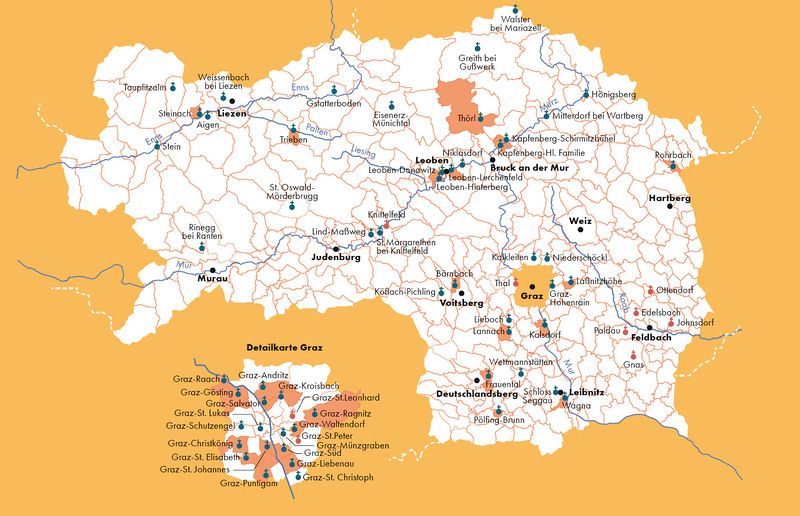Gegenwart
Kirchenbau nach 1945

Building Churches After 1945
Of the more than 600 churches in Styria, 67 were built after the Second World War. The provisional churches of the first years are soon followed by new buildings, which are characterized by architectural economy. Donawitz (1954), Kurt Weber-Mzell) looks somehow Carolingian. Knittelfeld (1956; Friedrich Zotter), Stainach (1958; Franz Kirchner) or Graz-Andritz (1960; Karl Raimund Lorenz) are unpretentious. Robert Kramreiter relied on architectural symbolism in Graz-Thondorf (1964) and Laßnitzhöhe (1963). The influence of Le Corbusier is obvious with Friedrich Moser’s work in Wagna (1964). The liturgical reform became visible in Leoben-Hinterberg (1967): Ferdinand Schuster places the altar straightforwardly in the centre as the centre of the celebrating congregation. Multi-purpose spaces are experiments of the 1970s: Graz-Waltendorf (1971; Ferdinand Schuster) or Graz-Kroisbach (1974; Wolfgang Kapfhammer, Johannes Wegan). Parish centres were established in Graz-Salvator (1981; Team A) and Graz-Ragnitz (1987; Michael Szyszkowitz, Karla Kowalski). In terms of design, the diversity increases, but one returns to the »Wegekirche« (Rudolf Schwarz), in which priest and people together are on their way towards the returning Lord. Interesting solutions are to be found in Aigen im Ennstal (1992; Volker Giencke) or the most recent new building in Graz-Schutzengel (1996; Werner Hollomey).
Text aus |Text from: Last & Inspiration. 800 Jahre – 8 Fragen. Ausstellungen zu »800 Jahre Diözese Graz-Seckau« | Burden & Inspiration. 800 Years – 8 Questions. Exhibitions on »800 Years of the Diocese of Graz-Seckau«, herausgegeben von | edited by Heimo Kaindl, Alois Kölbl, Johannes Rauchenberger, Styria Verlag, Wien 2018, S. | p. 320-321.